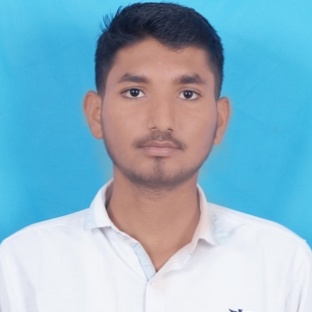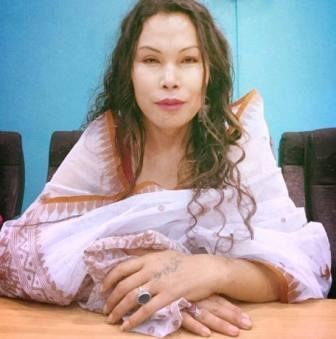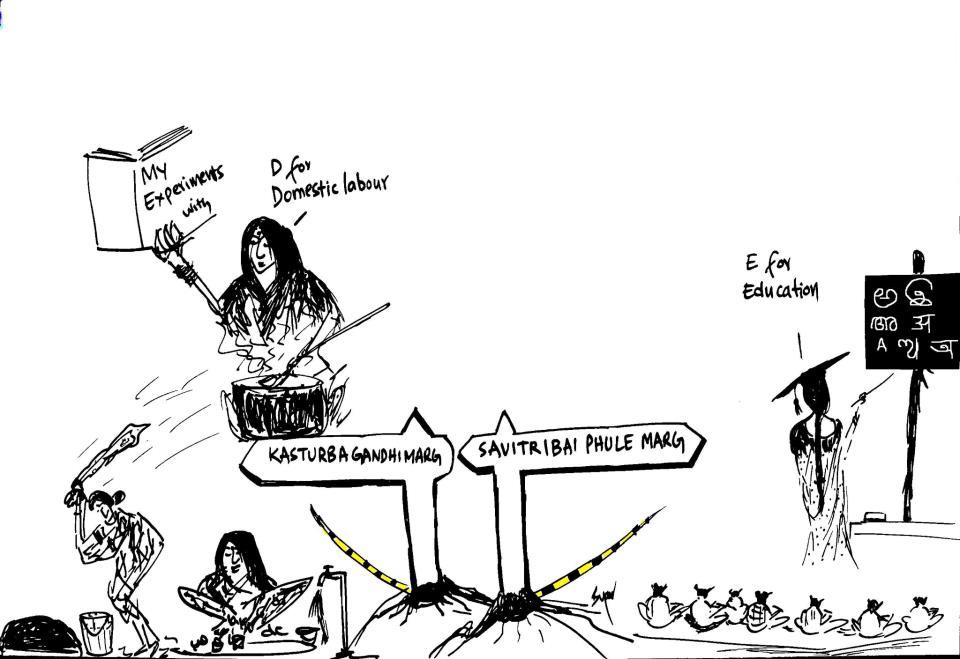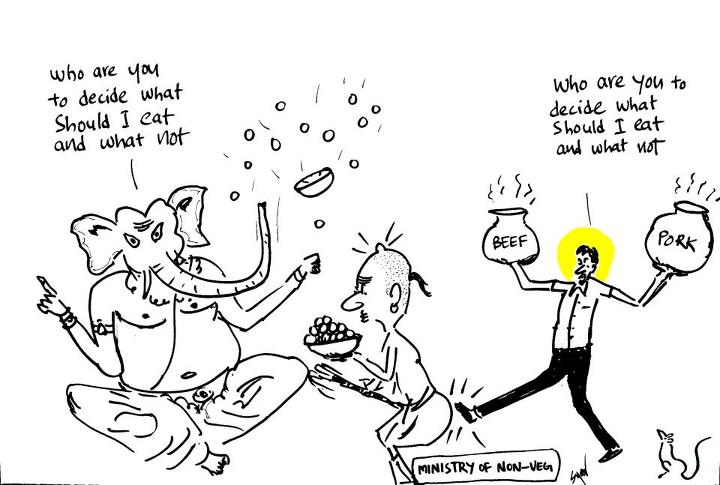Pranay Lokhande and Kunal Dhande

 Caste and religion based riots are not new in India, where caste and religious beliefs of the people are/were used for the supremacy of certain class of people. If we study riots in India, we will find history and constructs formed upon certain historical facts as major reasons. ‘History is what happened in your past told in your presence’. Generally, all over the world, history is written by the ruling classes and more often in praise of the ruling classes. In India, history has been the monopoly of Brahmin and allied caste historians and they did the same thing of glorifying brahmanical forces and their hegemony. They did this by hiding oppression and ostracism suffered by common masses of India due to the Brahmanical social order, further neglecting the liberation and egalitarian movements led by them. They have been mixing false information in history at the cost of true history of the land. Brahmin and allied caste historians created a problem through this unhistorical trickery. As it is rightly said, history is a mirror for following generations. Hiding true historical facts and mixing them with caste based hate and contempt will obviously lead to conflicting claims and counterclaims by people. These undercurrents of conflict have had profound effect on current socio-politics. Thereby it became a tool in hands of Brahmanical forces for inflicting conflicts in 21st century Indian society.
Caste and religion based riots are not new in India, where caste and religious beliefs of the people are/were used for the supremacy of certain class of people. If we study riots in India, we will find history and constructs formed upon certain historical facts as major reasons. ‘History is what happened in your past told in your presence’. Generally, all over the world, history is written by the ruling classes and more often in praise of the ruling classes. In India, history has been the monopoly of Brahmin and allied caste historians and they did the same thing of glorifying brahmanical forces and their hegemony. They did this by hiding oppression and ostracism suffered by common masses of India due to the Brahmanical social order, further neglecting the liberation and egalitarian movements led by them. They have been mixing false information in history at the cost of true history of the land. Brahmin and allied caste historians created a problem through this unhistorical trickery. As it is rightly said, history is a mirror for following generations. Hiding true historical facts and mixing them with caste based hate and contempt will obviously lead to conflicting claims and counterclaims by people. These undercurrents of conflict have had profound effect on current socio-politics. Thereby it became a tool in hands of Brahmanical forces for inflicting conflicts in 21st century Indian society.
Battle of Bhima-Koregaon
There was a counter revolution by brahmanical forces against the State carved out of immense struggle and martyrdom of common masses of Maharashtra, popularly known as Mavalas, under the great leadership of Chhatrapati Shivaji Raje. His son, and second Chhatrapati, Sambhaji Raje was caught by Mughal forces. It is commonly believed that, brahminical forces had conspired with the Mughals. This conspiracy lead to the overthrow of Shivshahi, and brahmanical forces established Peshwai, which was nothing but Manusmriti Raj, in Maharashtra. Peshwas were from Chitpavan Brahmin caste. However they gathered other sub caste brahmins, and gave them strategic posts in the Peshwa Raj. When Peshawas were in power they used it to humiliate and unleash atrocities on all of the Non-Brahmin community. Sons of soil were suffering from inhuman oppression, atrocities and cruelty of Peshwai. When British Raj took foothold gradually in east India, they came over to western India. Due to many factors, a battle ensued between Peshwa and Non-Brahmins supported by the Britishers. The battle of Bhima Koregaon was not between the Peshwas and the British, but between the Peshwas and the Non-brahmins.
Bombay Native Infantry which fought this battle as a vanguard included not only Mahars, who were numerous than others, but also Marathas, Kunbis, Muslims, Nomadic Tribes and Other Backward Classes. According to popular belief among Maharashtrians The Battle of Bhima Koregaon was closely related with Chh. Shivaji and Chh. Sambhaji. After Shivashahi was sabotaged by the Peshwas and the rule of Peshwai, people of Maharashtra never forgot the backstabbing and treachery of the Peshwas against Shivshahi. Many sons of soil vowed to avenge the overthrow of Shivshahi by destroying Peshwai. Showing utmost bravery against hopeless odds they, the 500 soldiers of 1st Regiment Bombay Native Infantry, won the battle by fighting continuously for twelve hours against 2000 strong infantry and cavalry of of Peshwa Baji Rao II which was reinforced constantly as the whole peshwa forces of 20,000 horses and 8,000 infantry was stationed close by (Wellington’s Campaigns in India, Reginald George Burton, 2008). Due to realization of immense importance of the Bhima Koregaon Battle, a 65 feet high obelisk, standing on a stone platform about 32 square feet on the spot on which the first shot was fired in the Bhima Koregaon Battle, was raised. (Lt.-Col. H.E. Kenyon, “The Battle Of Koregaon”, United Service Institute Journal, 1931.) The then government of Bombay province gave 250 acres land to 500 family members of the soldiers (1818 War Of Liberty, Vilas Kharat, Mulnivasi Publication Trust). The British government appointed one man, who belonged the Maratha community, to take care of the pillar. Dr. Babasaheb Ambedkar visited this place to commemorate the Battle of Bhima Koregaon. Manyavar Kanshiram Ji visited the Koregaon obelisk and gave a grand salute to the liberation fighters. Annually on 1st January, Liberty loving people from all over India and abroad gather in Bhima Koregaon to commemorate and celebrate the 1818 battle of Liberty.
200th Anniversary of Bhima Koregaon
The year 2018 saw grand celebration of 200th anniversary of the Koregaon Battle which overthrew the oppressive and inhuman regime of the Peshwas. Protagonists of Peshwa Raj in 21st Century were feeling vengeful against this grand celebrations. Amongst them were two Poona brahmins Manohar Bhide and Milind Ekbote, who claim that they work for religion. Butit is an open secret that their objective is to reinstate Peshwa raj! Milind Ekbote made a fake trust to control the Samadhi of the Great warrior Sambhaji Maharaj who was the Son of Chh. Shivaji and heir of Shivshahi . Using this platform, Poona brahmins spread two false rumors in western Maharashtra. First that 1818 battle was not between Peshwas and real sons of soil, the natives, but between Marathas and Mahars. Second they falsely claimed that Mahar community supported Britishers against the Maratha state. In order to hide the real facts, these two fake claims were made by Poona brahmins under the leadership of Milind Ekbote and Manohar Bhide. The first place battle which took place on 1st January 1818 was not between Marathas and Mahars. It was between Peshwa State and Bombay Native Infantry. Why would Maratha caste help save Peshwa Raj which destroyed Shivshahi? As a matter of fact, the term Maratha Army is used interchangeably to denote Maratha caste and Marathi speaking brahmins both. Readers must know the context in which the term Maratha is used.
One example from Government of Maharashtra’s recent publication will throw a flood of light on this issue. Directorate General of Information and Public Relations published in July 2017, “Maharashtra Varshiki 2016-2017” in Marathi language. In this book on page 14, “Golden Age”, it is written, “In 1818, there was the end of Peshwai and British seized power; this had affected social life of people of Maharashtra”. (English translation of Marathi text) Further on page number 15, ‘Birth of ‘Maharashtra”, the book claims that ‘Marathas’ term is not a caste based term, it includes Marathi speaking Maharashtrians. This government book then takes a u-turn on page number 16, and writes in para two,” Arrival of British…..Bajirao Second threw himself into the clutches of Britishers and then in 1818, Marathi Satta (power) came to an end. Mount Stuart Elphinstone who destroyed Maratha power from roots, established the foundations of British power”. This illustration when read in context will prove that use of the Maratha term has nothing to do with Maratha caste, it was pertaining to Brahmin Raj popularly known as Peshwai. Poona brahmins propagated fake facts among common masses of Maharashtra with the intention to divert the symbol of Anti-Brahmanism, the Bhima Koregaon obelisk popularly called as ‘Vijay Stambha’, and paint it as anti-Maratha, thereby inciting riots between Maratha community and other Non-Brahmins.
In the second place, Poona brahmins’ claim that Mahar Community helped Britishers against Maratha State is fraught with mischief. In 1818, there was no Maratha State. It was a Brahmin State called as Peshwai. Under this regime, Manusmriti was implemented with an iron hand. Severe punishments were invoked on Shudra and Ati Shudras. 85 percent of Maharashtrians were living under inhuman and oppressed environment. Mahars, the untouchable caste were forced to carry, strung from the waist, a broom to sweep away from behind the dust he treaded on to avoid pollution caused by it. He was to carry an earthen pot, hung from his neck wherever he went, for holding his spit lest his spit falling on earth should pollute dwija castes. When British came over to the western part of India, majority of people took it as an opportunity to get rid of inhuman conditions. Further, it must be remembered that, this opportunity to get liberty from the Peshwa regime by using British East India company’s resources was a political strategy on the part of the Untouchable community. Every one, the Peshwas, the Native People of India – Shudras and Untouchables and British East India Company had their own aims and objectives behind this great battle of Bhima Koregaon. That is the reason why the British, when there East India Company Raj was finally established in Western part, threw untouchable community in general and Mahars in particular out of Military service. They closed the doors on them only to open it again during first World War!
To conclude in the words of Dr. Babasaheb Ambedkar, what good has British conquest done to the Untouchables? Nothing! The only gain was that acted as a disinfectant against the foul air caused by Manusmruti and its principle of inequality was the ‘Principle of equality before law’. Poona brahmins deliberately conspired to paint the picture that Mahars fought against Marathas in this battle. This is proved to be utterly wrong and false propaganda.
Uncovering another truth hidden by Media
The nation-wide organization Bharat Mukti Morcha decided to Celebrate 200th anniversary of Battle of Bhima Koregaon under the aegis of BAMCEF (The All India Backward and Minority Communities Employees Federation). On 1st Jan 2017 BAMCEF & Bharat Mukti Morcha organized programme in Bhima Koregao on 199th anniversary of Battle of Koregaon. BAMCEF’s National President Waman Meshram declared that they will organize programmes all over India to propagate the true history of 1818 Battle of Liberty. It was further declared that seminars will be conducted in all districts of Maharashtra and major districts in other parts of India from 1 Jan 2017 to 1 Jan 2018. Mulnivasi Publication Trust, released a book on Bhima Koregaon battle authored by Vilas Kharat in a special programme held at Shaniwar Wada, Pune, in Nov 2017. In the month of November and December 2017 Purna Kalin Pracharaks (full time activists) and cadres of BAMCEF worked diligently day and night to spread the truth and enlighten the masses to work towards establishment of Constitutional objectives of Justice, Liberty, Equality and Fraternity. In this period, Manohar Bhide and Milind Ekbote were doing fieldwork to incite riots in Maharashtra by false propaganda against the Grand Commemoration of the Battle Of Bhima Koregaon.
After 200 years, a new battle starts
Bharat Mukti Morcha organized a massive rally at Bhima Koregaon to mark the 200th anniversary of Koregaon battle. Citizens from all over India came to pay their tribute to the fallen soldiers who fought with bravery against Peshwai, and saluted Vijay Stambha to commemorate the victory over Peshwai; thus the oath to avenge the treachery against Shivshahi was fulfilled. Brahmanical forces were trying to disrupt this huge rally and gathering. They tried to create social disharmony in the society but were not successful. On 1st January 2018, a grand programme to commemorate the 200th anniversary was held by Bharat Mukti Morcha. Honourable guests, namely Sarbjit Singh Mann (Shiromani Akali Dal, Amritsar), Muslim leaders, Lingayat Gurus and Adivasi Sengal Abhiyan leader Salkhan Murmu (Ex Member Parliament) were invited. Intrestingly those whose ancestor had fought in Bhima Koregaon battle had also come to the programme. In his speech, National President of BAMCEF Waman Meshram mentioned four important issues. He said that government should give 267 acres of (allocated) land for the Vijay Stambha. It is the responsibility of the government. If the government does not do that they will agitate in 44,000 villages in Maharashtra. Second, Milind Ekbote, the Brahmin in control of the tomb of Sambhaji Maharaj at Vadhu Budruk, and whose ancestors had killed our king (Sambhaji Maharaj), should be expelled, thus liberating the tomb from his clutches. Third, in front of Shaniwar Wada, a statue of Bajirao Peshwa, who promulgated the decree of broom and earthen pot to be tied to untouchable community, was installed. This statue is a symbol of atrocity and therefore unconstitutional. It must be removed. These are our democratic demands. He further said that, “we urge our democratic demands must be accepted and acted upon, if not, then automatically other means are open to us”.
Riots and politics
On the same day, a group of people who claimed to be the warriors of Peshwa, attacked citizens who gathered in Bhima Koregaon to pay their tribute. Many vehicles were burned and vandalized. Women, childrens and old citizens were not spared and they too were beaten with sticks and stones. Some citizens claim that the rioting crowd shouted slogans of Peshwa Raj and hailed Manohar Bhide and Milind Ekbote. The very next day, many leaders declared Maharashtra Bandh. National President of BAMCEF sent messages to cadres all over Maharashtra to defend our people from the attack of Brahmanical conspiracies and declared Bandh in Maharashtra at late night of 1 Jan 2018. You can check his late night Facebook post. Even Adv. Rahul Makhare (he was also associated with BMM/BAMCEF programme) before 27 Dec 2018 had written on Facebook that Ekbote and Bhide will do something wrong. The Bhide and Ekbote group organized a rally in Thane district and distributed pamphlets in public. This pamphlet demanded a ban on BAMCEF, Sambhaji Brigade and Bahujan Kranti Morcha. Parivartan yatra was called from Nagpur to Pune. During the rally Ex. MP Raut made an allegation in public that Vilas Kharat’s book on Bhima Koregaon was responsible for violent riots on 1st January 2018. Government of Maharashtra claimed that Naxalites were responsible for violent riots.
They arrested some organizers of Elgar Parishad which was held on 31st December 2017. In Elgar conference no one talked about battle of Bhima Koregaon except Prashanth Dontha. You can check all videos and see that Prashanth Dontha was the only man who spoke about the battle but media never covered him because he is an Ambedkarite. He spoke the truth in the programme. But media covered the non issues raised by Jignesh Mevani and others but they did not say a single word on the Bhima Koregaon battle. Government arrested innocent citizens on the eve of Maharashtra bandh. The main culprits of Bhima Koregaon riots, Manohar Bhide and Milind Ekbote, are still free in Maharashtra. Many social activists and organisations have registered police complaints and submitted evidences which prove beyond doubt that Koregaon Riots were incited under the leadership of Bhide and Ekbote.
Justice is still awaited.
~
Special thanks to,
1. Kumar Kale (National Co-ordinator of Bahujan Kranti Morcha who did field work in Bhima Koregaon)
2. Sudhir Nag (Editor of Mulnivasi Bahujan Bharat English Magazine)
3. Dilip C Mandal (Senior Journalist )
4. Ajay Chaudhary (He is a Professor in Nagpur)
5. Vilas Kharat (Author of two books which are on Bhima koregaon issue)
6. Dr. Dushyant Khobragade (His facebook post helped to understand the issue)
7. Siddarth Singare (Social activist in Aurangabad)
8. Pavankumar Shinde ( Social activist From Jalna)
9. National Dastak
10. Pranay Lokhande, History student in Pondicherry was himself present there and surveyed and observed 10 km of area towards Wagholi, Pune with Vicky Chaudhary and Thamarai Kannan from Tamil Nadu and Balu Tidke from Nagpur.
~~~
Pranay Lokhande is a student at Pondicherry Central University.
Kunal Dhande is a student at Student in Government Law College, Mumbai.










